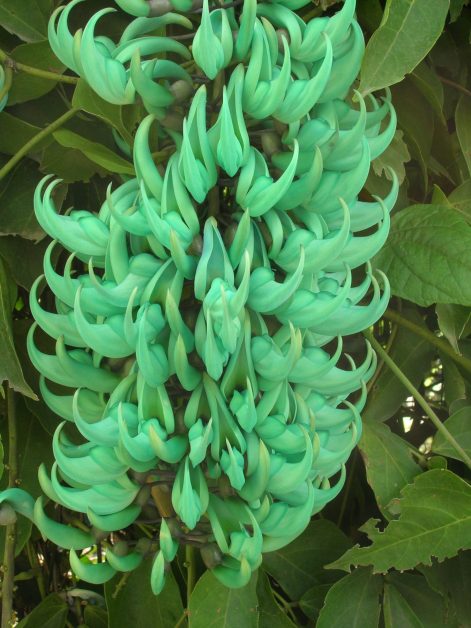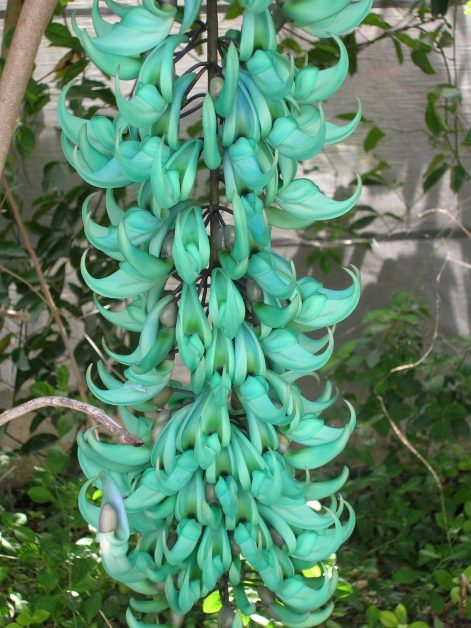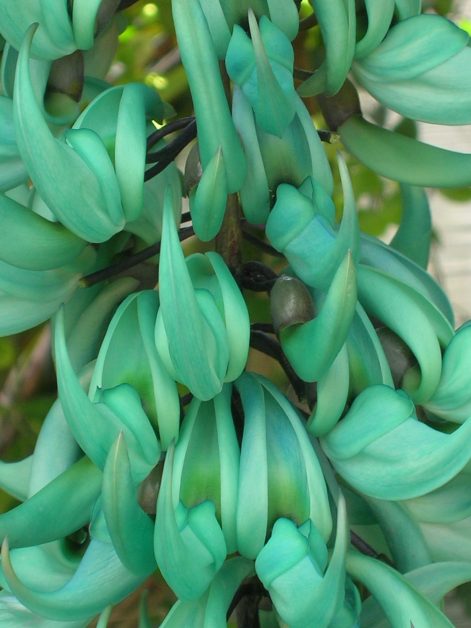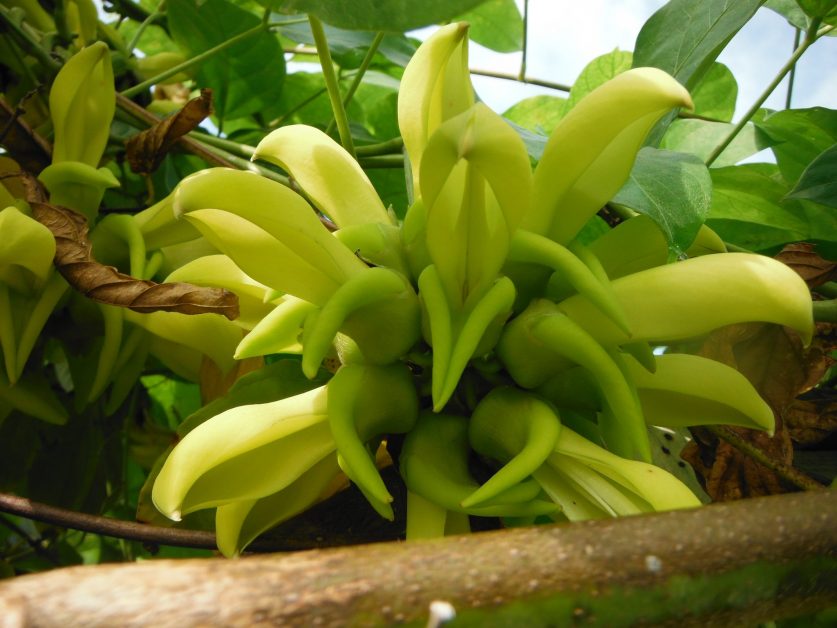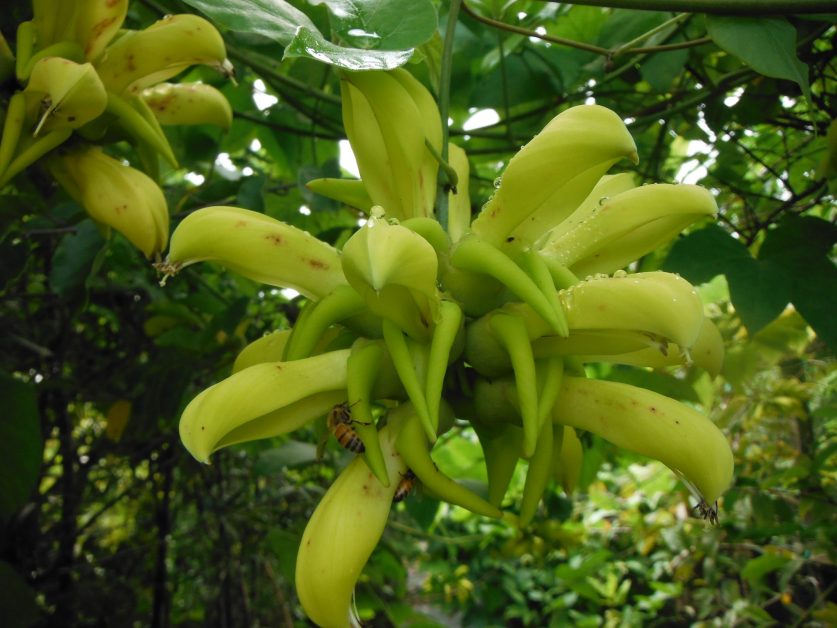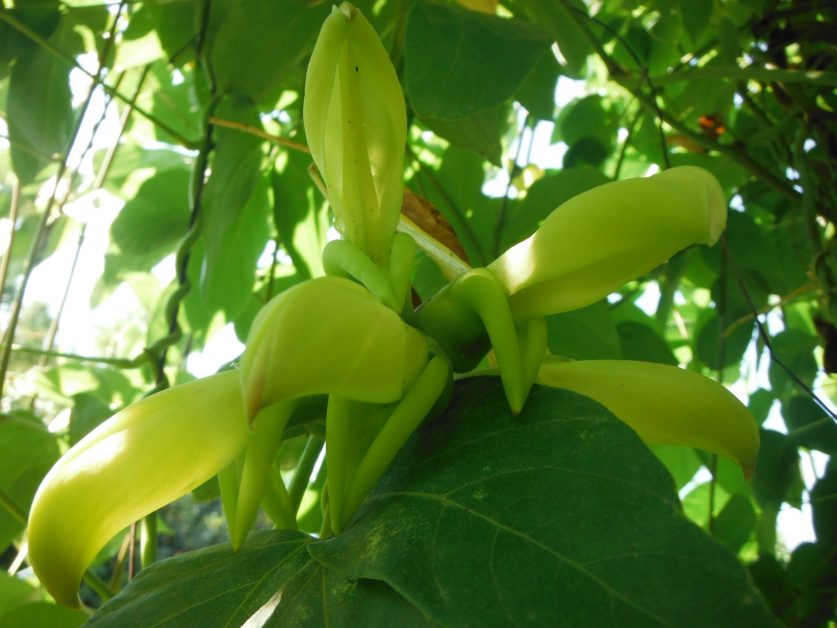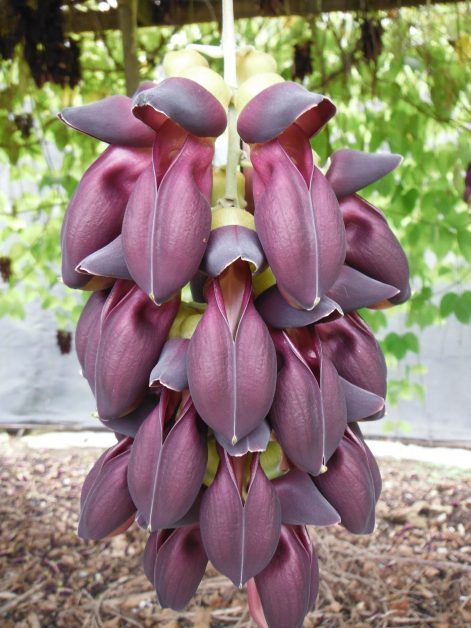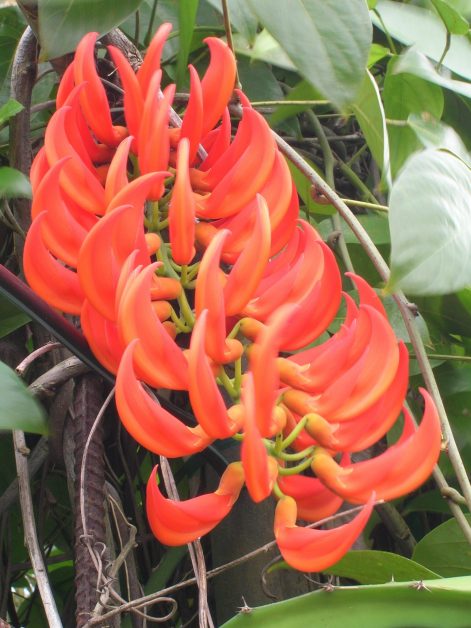The Colorful Jade Vines
This week we’ll take a look at a few jade vines. The term is a little bit confusing, because not all the plants known by that name even belong to the same genus. But what they do have in common is that they are lianas, that is, woody-stemmed vines that climb and twine around their supports. And they are good to look at.
Green Jade Vine, the common name of Strongylodon macrobotrys, hardly does justice to the striking turquoise coloration of the claw-shaped, bat-pollinated flowers. The plant is native to moist forests in the Philippines, where mature specimens can reach nearly 60 ft. long. Despite being found on the 7,100+ islands that make up that republic, the Green Jade Vine is nevertheless considered endangered as a consequence of habitat destruction. The best way to grow this beautiful vine is on a pergola or other structure featuring vertical elements, since the flowers form on cascading trusses that reach several feet in length.
The Black Jade Vine, Mucuna nigricans, is native to eastern Asia and, like the Green Jade Vine, belongs to the bean family. However, its flowers, generally described as dark violet or maroon in color, are not claw-shaped like those of the Green Jade Vine. Instead, they grow in grapelike clusters or bunches about 6 in. wide that hang beneath the plant’s foliage. For best results, grow this species in full sun and provide regular watering.
The Yellow Jade Vine, Mucuna sloanei, is a New World species, native to forests of Central and South America, though it is now distributed widely throughout the tropics. In addition to its clustered, elongated yellow flowers, it produces seeds which bear a strong resemblance to small brown hamburgers. In some communities, the seeds are polished for fabrication into trinkets.
Green, Black and Yellow Jade Vines can be found at Richard Lyons’ Nursery primarily in 3-gal. pots, but also in a small number of 15-gal. containers. From time to time, the nursery also stocks the Red Jade Vine, Mucuna bennettii.
- Strongylodon macrobotrys (Jade Vine)
- Strongylodon macrobotrys (Jade Vine)
- Strongylodon macrobotrys (Jade Vine)
- Mucuna sloanei (Yellow Jade Vine)
- Mucuna sloanei (Yellow Jade Vine)
- Mucuna sloanei (Yellow Jade Vine)
- Mucuna nigricans (Black Jade Vine)
- Mucuna bennetti (Red Jade Vine)
